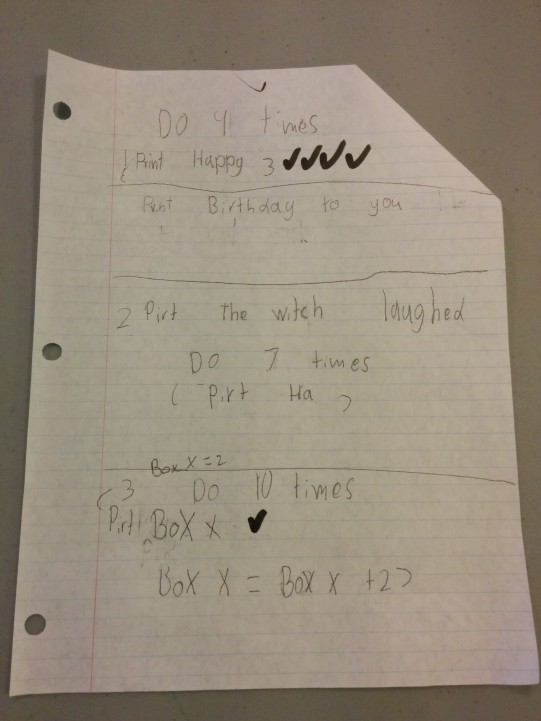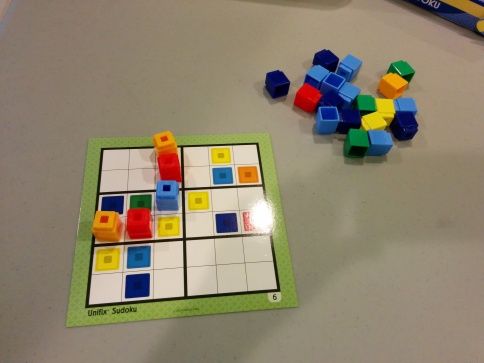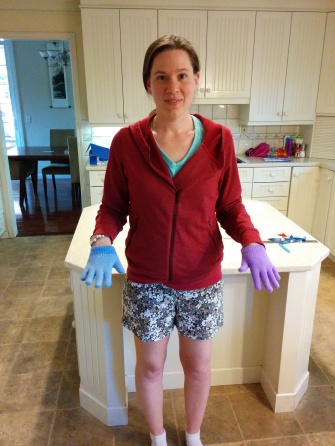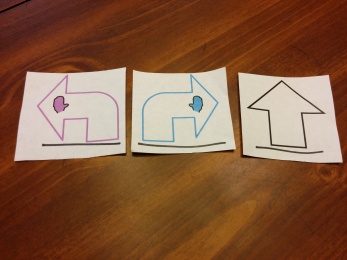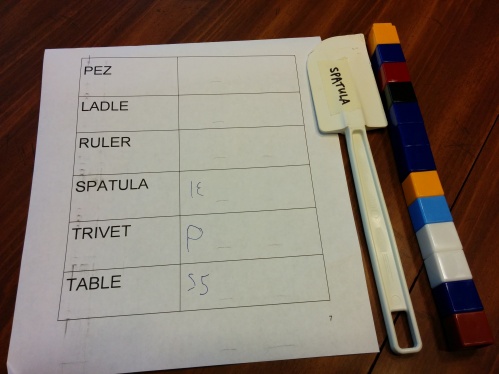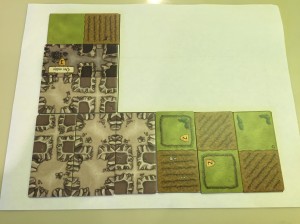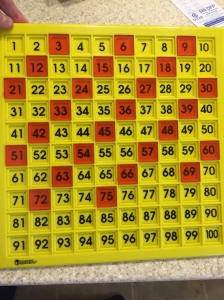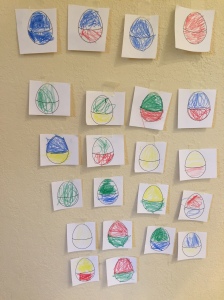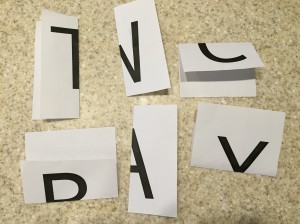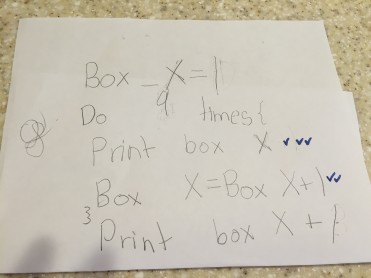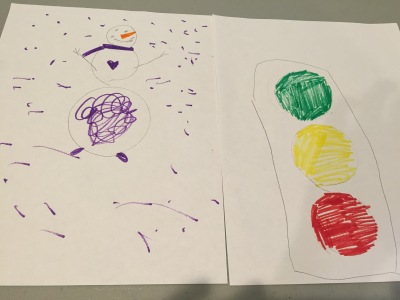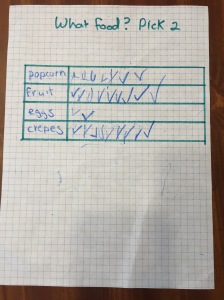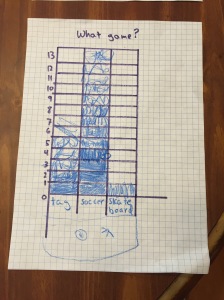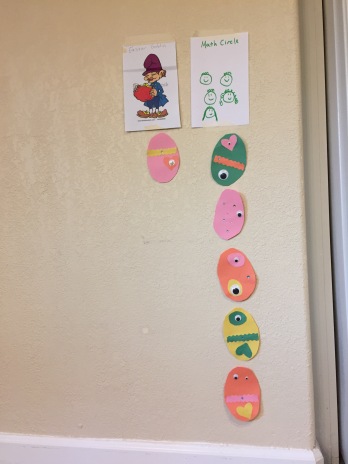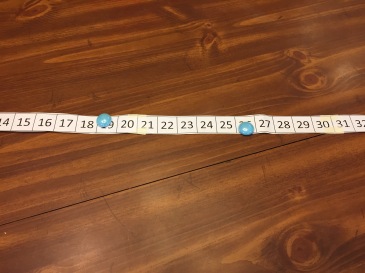The Activities
- Topic: Counting: Book: I Spy Two Eyes: Numbers In Art by L. Micklethwait.
- Topic: Numbers: Using the 100 tile board, I picked about 15 random numbers, and then one kid at a time I named a visible number, which they then had to find and add to the board. I then added another random number to replenish the 15.
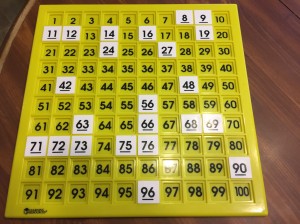
- Topics: Transitivity, Verbal Discussions: I asked the kids questions of the form “If a elephant is bigger than a horse, and a horse is bigger than a dog, which is bigger, an elephant or a dog?” Some of the problems, like this one, the answer was obvious from the real world; some, you couldn’t tell (e.g., “John taller than Sam, Sam taller than George”); and some were intentionally counter-factual (“Worm faster than car, car faster than airplane”). I gave each kid the chance to pick a theme for one transitivity problem.
- Topic: Programming: With the help of a parent volunteer, I split the kids into two groups. Within each group, one kid was the robot (taking turns) and the other 1 or 2 kids made the programs (we used colored gloves as described in earlier circles). First, they made up whatever programs they wanted, and then I gave them several simple programs to do (go to the wall and back, walk in a square, spin around twice).
- Topic: Addition: Book: What’s New At The Zoo? An Animal Adding Adventure by S. Slade.
- Topic: Measurement: I prepared strips of cardboard ranging from 3 cm to 24 cm, which I laid out on a table. Each kid got a ruler, and I gave each one a different length strip they needed to find. Each kid found about 3 different lengths.
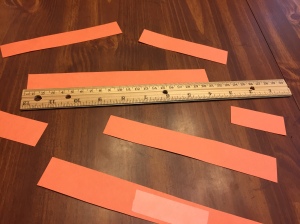
How Did It Go?
All 5 kids attended.
I Spy Two Eyes
Each page had a work of art with between 1 and 20 of some particular item. Once we got into the harder pieces I had the kids take turns finding and counting the items.
Tile Board
The kids were pretty good at finding the numbers, but still need practice at finding the number on the board. We did about 4 times around the table adding numbers to the board. Then I let them add as many as they could in 2 minutes, but some kids started adding numbers to random places, so we stopped early. Our son has had a lot of practice with numbers, so I had him sit on the floor and gave him a pile of numbers to sort; and then each time he finished the current set, I would give him a few more to add to his sorted list.
Transitivity
The kids were definitely inclined to use real-life intuition. For example, for the question “John’s father is taller than John, John’s mother is taller than John, who is taller, the father or mother?” they said the father was taller. But some of them did explain that it was because fathers are usually taller than mothers. By the end, I think they did notice the difference between A > B and B > C; vs. B > A and C > A. The one puzzle that really gave them problems was “A worm is faster than a car, and a car is faster than an airplane, which is faster, worm or airplane?” A couple of the kids are really into airplanes, so they were sure airplanes were faster. I said “But it’s a magic worm” and “It’s a slow plane and a fast car”, but even after all that they still were convinced the airplane was faster. On the other hand, they did pretty well on puzzles like “A grasshopper is yummier than an ant, an ant is yummier than a cockroach”, where there was no real-world knowledge to apply.
Programming
Splitting into two groups worked well, with 4 kids making a program for 1 kid, some of the 4 would probably have gotten restless, but with only 1 or 2 kids writing the program, and only 1 or 2 turns to wait before being the robot, they stayed engaged. As before, the gloves are very helpful for left vs. right. The other group that I wasn’t leading made very long programs that took the robot into another room.
What’s New At The Zoo?
This book was a series of addition problems, ranging from easy (1 + 2) to harder (8 + 12). We practiced doing addition by counting up — e.g., 8 + 5 is done by counting 9, 10, 11, 12, 13; keeping track of the number of counted numbers on your fingers.
Measuring Strips
The kids were pretty good at this. There was some confusion between inches and centimeters though. They did a good job making sure to line up the strip with 0 at one end, so they were usually correct in their measurements.
